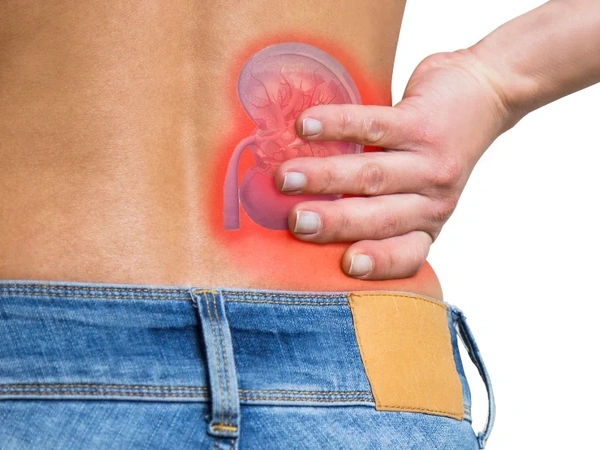A urinary tract infection, or UTI, is a relatively common infectious condition that affects any part of your urinary system. Different microbes can cause a UTI, although most cases of urine infections are caused by bacteria.
Most people will experience a UTI at least once during their lifetime. Learning how to recognize the signs and symptoms of a UTI is very helpful, since you’ll be able to spot all symptoms of a UTI early on and seek treatment.
Keep reading this article to learn more about urinary and bladder infection causes, symptoms, risk factors, and how to prevent them.
What is a UTI?
According to the Cleveland Clinic, a UTI is an infection that can affect your bladder (cystitis), urethra (urethritis), or kidneys (pyelonephritis). These are all parts of the human urinary tract.
Under normal circumstances, your urinary tract shouldn’t contain any bacteria. Urine is created as blood passes through your kidneys, where excess water and waste products are filtered out and turned into urine. But when a pathogen enters your urinary tract, it can result in an infection.
Types of urinary tract infections
There are different types of urinary tract infections, depending on the part of the urinary tract that is affected. According to Stanford Medicine Healthcare, UTIs can be divided into:
- Urethritis: an infection that affects the urethra, which is the small tube that carries urine from your bladder to the outside of your body.
- Cystitis: an infection of the bladder, which usually results from a urethral infection that has traveled upwards.
- Pyelonephritis: an infection that affects one or both kidneys. Most cases of pyelonephritis are caused by an infection that moves up from the urethra or bladder. But it can also happen due to a blockage in the kidneys that obstructs the flow of urine.
UTIs can be caused by a wide range of pathogens, including bacteria, viruses, fungi, and even parasites. But according to the University of California San Francisco, approximately 90% of all urinary tract infections are caused by a bacteria called E. coli. This bacteria typically lives in the gastrointestinal tract without causing harm, but it can lead to infection when it enters the urinary system.
Urinary tract infection risk factors
Anyone can get a urinary infection, but there are certain risk factors that increase your likelihood of getting a UTI. According to the Mayo Clinic, women are far more likely than men to have UTIs. This is because the female urethra is much shorter, which means that microbes have to travel a shorter distance in order to enter the urinary tract. Men can still get UTIs — however, repeated UTIs in men can be a sign that there’s an underlying problem.
According to a study published in the journal Therapeutic Advances in Urology, other risk factors for UTIs include:
- Frequent sexual activity
- Certain types of birth control, such as diaphragms and spermicides
- Menopause
- Vaginal atrophy
- Family history
- Personal history of frequent UTIs during childhood
- Diabetes
- Immunosuppression
- Poor hygiene
- Anatomical abnormalities of the urinary tract
- Use of urinary catheters
- Recent surgical procedures
How do I know if I have a UTI?
The symptoms of bacterial urinary infections can range widely, and in some cases, people don’t develop any symptoms at all — which is why it’s important to seek medical assistance in the diagnosis of a urinary infection. But according to the NHS, symptoms of urinary infections can include:
- Painful or burning sensation when you urinate (dysuria)
- Feeling the urge to urinate more often or with urgency
- Waking up to urinate during the night (nocturia)
- Feeling like you can’t empty your bladder completely after urinating
- Cloudy, dark, bloody, or foul-smelling urine
- Lower abdominal or lower back pain
- Fever
Signs and symptoms of a UTI in males
The signs and symptoms of a UTI are very similar in both genders, but there can be some slight differences. Men are more likely to experience difficulty when starting the urine stream, especially if they also have prostate problems. Some men with UTIs can also have rectal pain.
Signs and symptoms of a UTI in women
As we mentioned above, women are more likely to develop UTIs, and most women will experience a UTI at least once in their life. Women are more likely to experience pelvic pain or pressure.
Early signs of bladder infection
Symptoms of a urinary infection can vary from one person to the next. However, some of the beginning symptoms of a UTI tend to include cloudy urine with a strong smell, and a burning sensation during urination.
Best way to prevent UTIs
Most UTIs can be treated with a simple course of antibiotics, but they still cause uncomfortable symptoms that we all wish to avoid. In other cases, UTIs can lead to serious complications. The good news is that you can do several things to prevent UTIs. According to the CDC, you can prevent UTIs by:
- Urinating after having sex
- Taking showers instead of baths
- Making sure you stay hydrated
- For girls and women, wiping front-to-back after using the toilet
- Avoiding douching, powders, sprays, and other harsh products in the genital area
You can visit STDWatch.com now to learn much more about other reproductive and sexual health topics, including at-home STD testing.
Sources
Urinary Tract Infections - my.clevelandclinic.org
Types of Urinary Tract Infection - stanfordhealthcare.org
Urinary Tract Infections - ucsfhealth.org
Urinary tract infections (UTIs) - mayoclinic.org
Risk factors and predisposing conditions for urinary tract infection - ncbi.nlm.nih.gov
Urinary tract infections (UTIs) - nhs.uk
Urinary Tract Infection - cdc.gov


